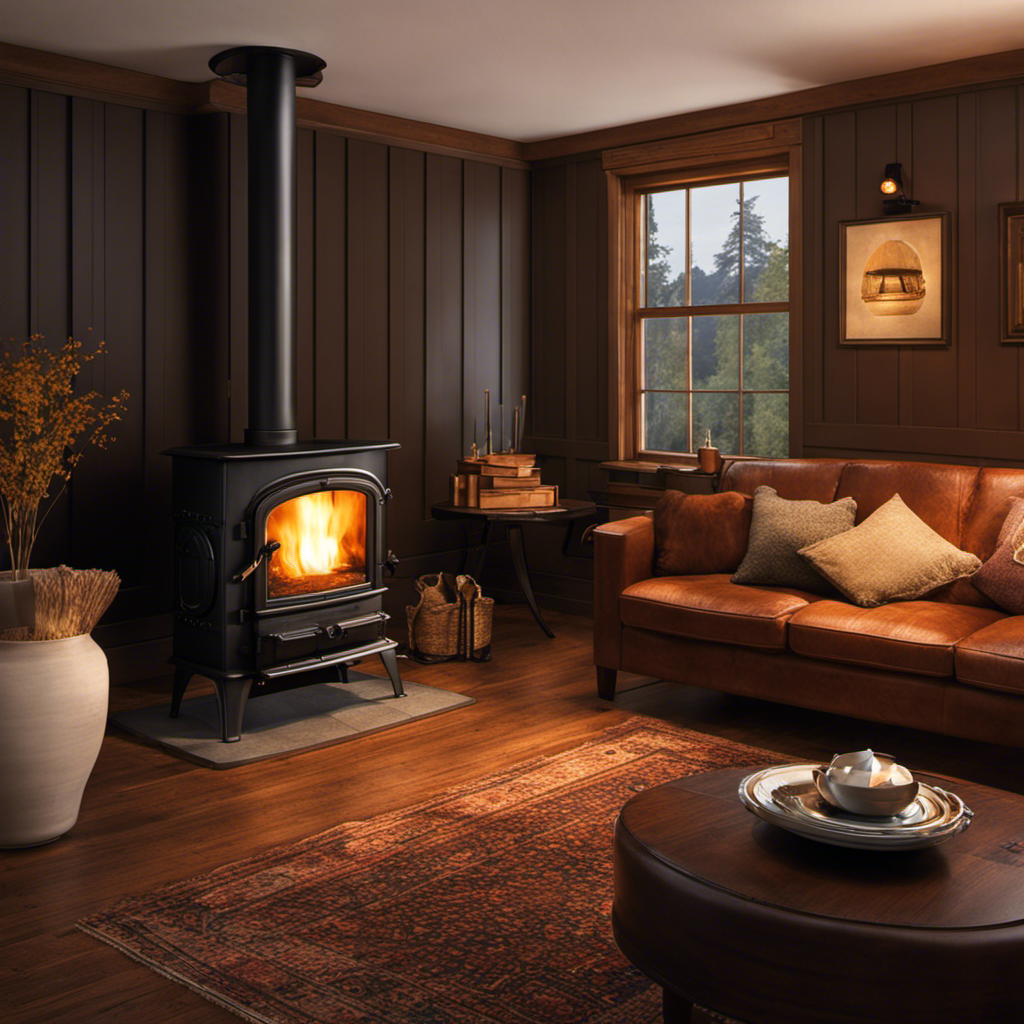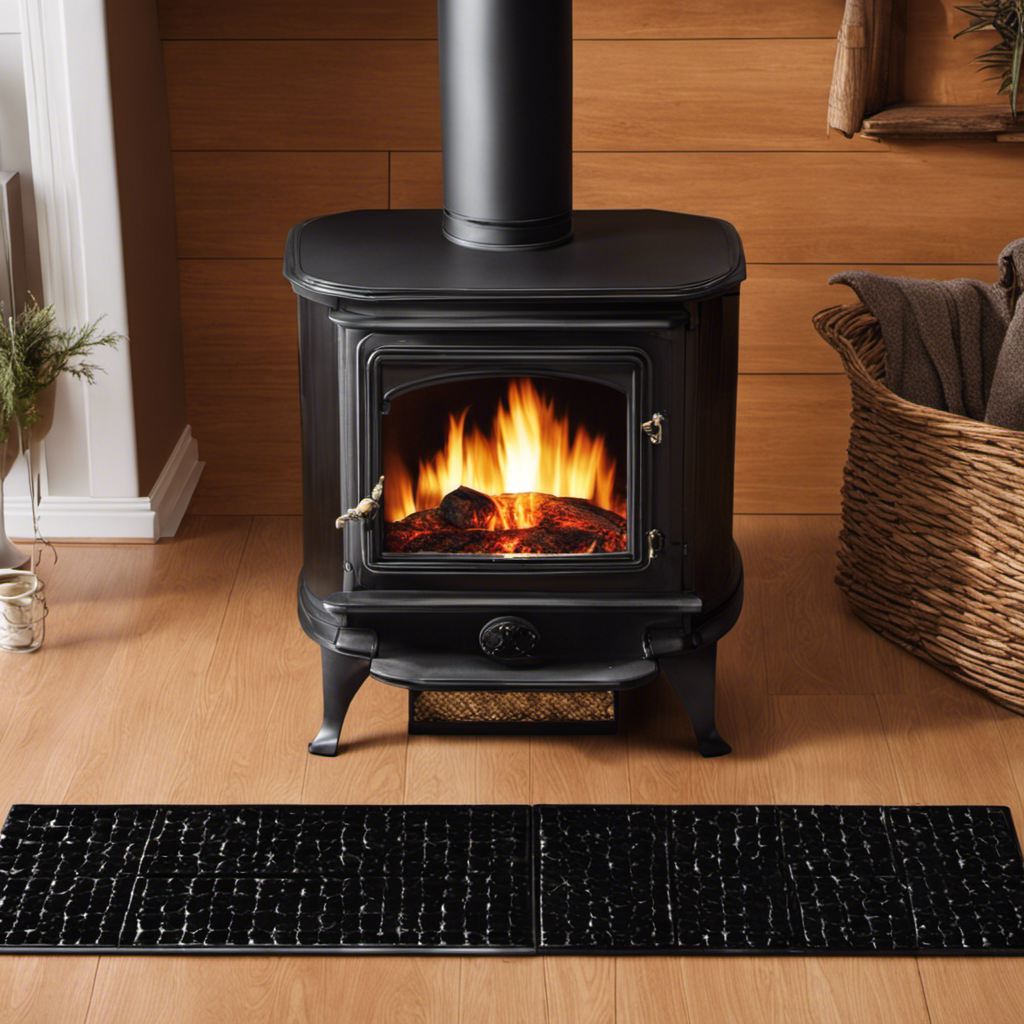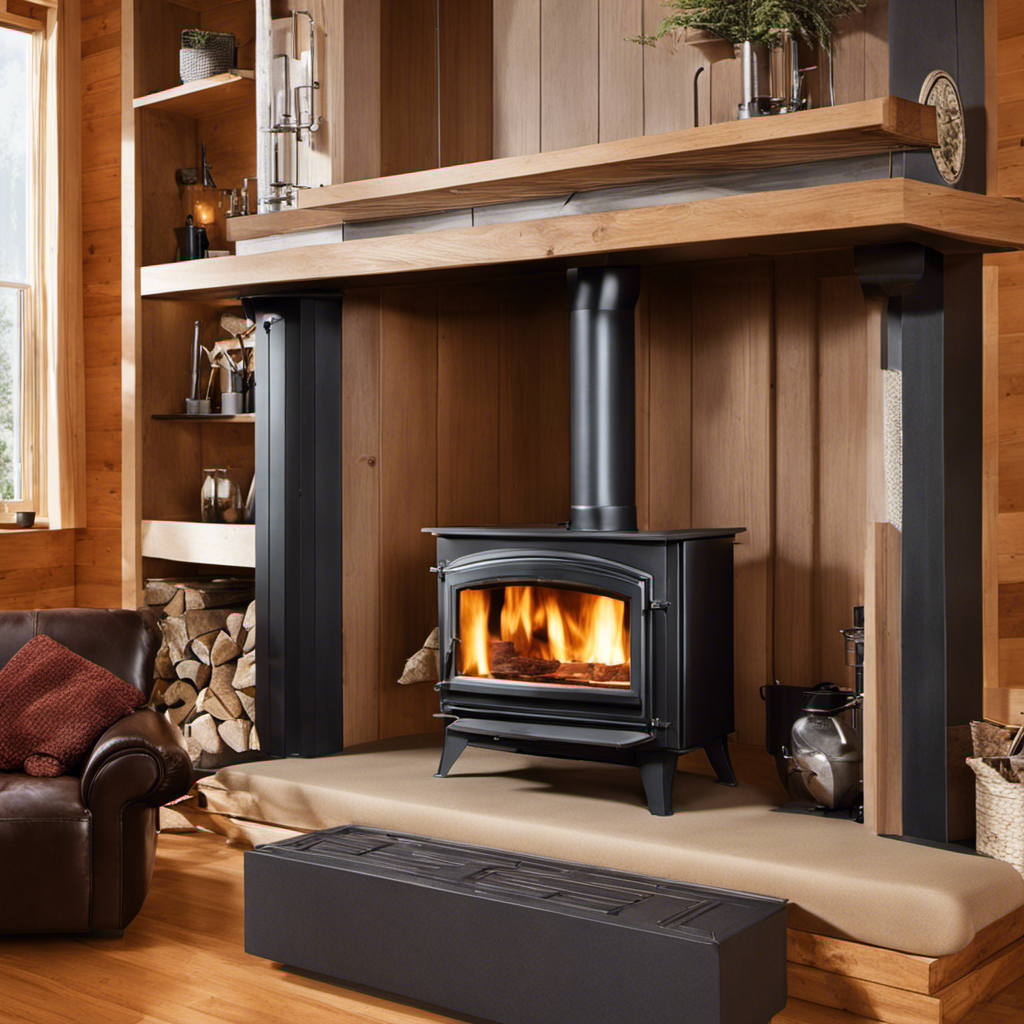Wood Stove
Why Is There Too Much Ash In My Wood Stove

As a person with a deep interest in wood stoves, I often end up being perplexed by the significant quantity of ash produced by my stove. It’s like experiencing a snowstorm indoors, leaving me truly astonished.
In this article, I will explore the common causes of this frustrating problem and delve into the science behind combustion and ash production.
I’ll also share some valuable tips and maintenance techniques to help you reduce ash accumulation and keep your wood stove running efficiently.
Let’s dive in and banish the ash storm for good!
Key Takeaways
- Using wet or unseasoned wood can cause excessive ash in wood stoves.
- Properly adjusting air intake for efficient burning can help reduce ash accumulation.
- Regularly cleaning the stove, chimney, and flue can help manage ash in wood stoves.
- Using dry, seasoned wood and avoiding burning treated or chemically treated wood can reduce ash build-up.
Common Causes of Excessive Ash in Wood Stoves
I’ve noticed that one of the common causes of excessive ash in my wood stove is using wet or unseasoned wood. When the wood isn’t properly dried or seasoned, it contains a higher moisture content. As the fire burns the wet wood, it produces more smoke and releases more unburned particles into the stove, resulting in increased ash buildup.
This excess ash can have a significant impact on the performance of the stove. The buildup restricts airflow, making it harder for the fire to burn efficiently. This reduces the stove’s heat output and can lead to incomplete combustion, causing more smoke and pollutants to be released into the environment.
Additionally, the excess ash requires more frequent cleaning, which can be time-consuming and inconvenient. To prevent excessive ash buildup and optimize stove performance, it’s essential to use properly seasoned wood with low moisture content.
Understanding the Combustion Process and Ash Production
I understand how the combustion process works and how it relates to the production of ash in my wood stove. When I burn wood in my stove, it undergoes a chemical reaction called combustion. This process involves the combination of oxygen from the air with the carbon and other elements present in the wood. As a result of this reaction, heat and light are produced, along with byproducts such as water vapor, carbon dioxide, and ash.
Here are five key points to help us better understand ash production and the combustion process:
- Combustion requires the presence of oxygen.
- The ratio of air to fuel affects the efficiency of combustion.
- Different types of wood produce varying amounts of ash.
- The temperature of the fire influences the amount of ash produced.
- The composition of the wood, including moisture content and impurities, can impact ash production.
Factors That Influence Ash Build-Up in Wood Stoves
The type of wood used and the temperature of the fire are two factors that greatly influence ash build-up in wood stoves.
When it comes to factors affecting ash production, the quality of the wood plays a crucial role. Different types of wood contain varying amounts of moisture, resins, and minerals, all of which contribute to the amount of ash produced. Hardwoods tend to produce less ash compared to softwoods due to their lower resin content.
Additionally, dry wood burns more efficiently, resulting in reduced ash build-up. The temperature of the fire also impacts ash production. A hot fire burns wood more completely, leaving behind less ash. On the other hand, a cooler fire may not fully combust the wood, leading to increased ash accumulation.
Understanding these factors and choosing high-quality, dry wood can help minimize ash build-up in wood stoves.
Tips for Reducing Ash Accumulation in Your Wood Stove
To reduce ash accumulation in your wood stove, try using a mesh screen and regularly cleaning out the ashes. Ash build-up is a common problem in wood stoves, but with a few simple steps, you can minimize the amount of ash that accumulates.
Here are some tips to help you reduce ash accumulation:
-
Ensure efficient burning by properly adjusting the air intake. This will promote complete combustion and reduce the amount of ash produced.
-
Use dry, seasoned wood that has been properly stored. Wet or unseasoned wood tends to produce more ash and can lead to a build-up in your stove.
-
Avoid burning wood that has been treated, painted, or contains glue or other chemicals. These substances can release harmful toxins and create excessive ash.
-
Clean your stove regularly, including the chimney and flue, to prevent the build-up of creosote and ash.
-
Consider using a high-quality wood stove that’s designed to burn efficiently and produce less ash.
Maintenance and Cleaning Techniques to Manage Ash in Wood Stoves
Using a brush and ash shovel, I can easily remove the ash from my wood stove and dispose of it properly.
Cleaning techniques are crucial for efficient and safe operation of wood stoves.
Regularly removing ash prevents it from accumulating and blocking airflow, which can lead to poor combustion and reduced heat output.
To manage ash effectively, it’s recommended to wait until the stove has cooled down before starting the cleaning process.
Use a heat-resistant ash shovel to scoop out the ash and place it in a metal container. Avoid using plastic bags or combustible materials for disposal.
Additionally, it’s essential to clean the stove’s ash pan and interior surfaces regularly to maintain optimal performance.
Proper ash management is essential for the longevity and efficiency of wood stoves.
Frequently Asked Questions
How Often Should I Clean My Wood Stove to Prevent Excessive Ash Build-Up?
I clean my wood stove every 1-2 weeks to prevent excessive ash build-up. Regular cleaning is important for maintaining proper airflow and preventing damage to the stove. Remember to also clean the glass for better visibility.
Can the Type of Wood I Use in My Wood Stove Affect the Amount of Ash Produced?
The type of wood used in a wood stove can affect the amount of ash produced. Hardwoods like oak and maple tend to produce less ash compared to softwoods like pine. Properly storing wood can also help reduce ash accumulation.
Are There Any Specific Techniques or Methods to Properly Dispose of the Ash From My Wood Stove?
Proper ash disposal techniques involve allowing the ashes to cool completely before removing them from the wood stove. Minimizing ash residue can be achieved by regularly cleaning the stove and using seasoned hardwood.
Can Using a Fireplace Insert or Stove Fan Help to Reduce the Amount of Ash Produced in My Wood Stove?
Can a fireplace insert or stove fan reduce ash in my wood stove? Yes, using a fireplace insert can increase efficiency and reduce ash buildup. A stove fan can also help circulate heat, minimizing ash production.
Is There a Way to Prevent Ash From Escaping Into the Room When Opening the Door of the Wood Stove for Refueling or Maintenance Purposes?
Preventing ash spillage and ensuring effective ash containment when opening the wood stove door for refueling or maintenance is crucial. Properly sealing the door, using a tight-fitting gasket and regularly cleaning the ash pan can help minimize ash escaping into the room.
Can Excessive Ash in a Wood Stove Harm Animals?
Excessive wood stove ashes can potentially harm animals around your home. If ingested, these ashes may cause internal injuries or poisoning. Animals may also inhale the fine particles, leading to respiratory issues. Proper disposal and regular cleaning can help minimize the risks associated with wood stove ashes and animals.
Conclusion
In conclusion, the excessive ash in your wood stove may seem like a never-ending nightmare, but fear not! By understanding the combustion process, considering external factors, and following proper maintenance techniques, you can conquer the ash buildup.
With a little effort, you’ll be able to enjoy a cleaner and more efficient wood stove experience. So don’t let the ash overwhelm you – take control and reclaim your stove!
Logan’s affair with adventure began in childhood. He hailed from a small town where vast forests bordered one side and endless shores stretched on the other. His days were spent exploring uncharted woods, climbing tall trees, or listening to the tales of old sailors. This early immersion in a world brimming with stories and mysteries became the foundation of his passion for writing.
Wood Stove
Does It Matter How You Put Wood In A Wood Stove

As someone passionate about wood-burning stoves, I’ve frequently pondered whether the method used to arrange firewood affects their efficiency in heating. Motivated by this interest, I chose to investigate the effects of various firewood arrangements on heat dispersal, the duration of the fire’s burn, and the stove’s total effectiveness.
In this article, we’ll uncover the importance of proper wood placement and share some tips to maximize efficiency. Get ready to learn how a simple change in wood arrangement can make a world of difference in keeping your home cozy and warm.
Key Takeaways
- Proper wood placement in a wood stove is important for stability and air circulation.
- Using dry and seasoned wood is essential for efficient burning and to avoid excessive smoke.
- Stacking wood in a crisscross pattern and leaving gaps for airflow ensures even heat distribution.
- Strategic wood placement can maximize burn time and heat output in a wood stove.
The Importance of Proper Wood Placement
I always make sure to place the wood in my wood stove properly to ensure efficient burning. The importance of stacking and proper firewood preparation can’t be overstated.
When it comes to stacking firewood, it’s crucial to create a solid base. Start with large pieces of wood that will provide stability. Then, stack smaller pieces on top, making sure to leave enough space between them for air circulation. This allows for better combustion and a hotter fire.
Additionally, it’s essential to properly prepare the firewood by ensuring it’s dry and seasoned. Wet or green wood not only produces less heat but also creates excessive smoke and creosote buildup, which can lead to chimney fires.
Maximizing Efficiency: Tips for Loading Your Wood Stove
To maximize efficiency, load your wood stove carefully and evenly, ensuring that there’s enough space for air circulation.
When it comes to stacking wood, there are a few tips that can help you get the most out of your wood stove.
First, make sure to stack the wood in a crisscross pattern. This allows for better airflow and more efficient combustion.
Additionally, it’s important to use dry and seasoned wood. Wet or green wood will produce more smoke and less heat, reducing the efficiency of your stove.
Lastly, avoid overloading the stove. Too much wood can restrict airflow and prevent proper combustion.
Avoiding Common Mistakes When Putting Wood in a Stove
Stacking wood haphazardly and using damp logs are common mistakes to avoid when putting wood in a stove. Proper stacking is essential for efficient burning and maximizing heat output.
It’s important to arrange the wood in a way that allows for good airflow and even combustion. Start by placing larger logs at the bottom, creating a sturdy base. Then, stack smaller logs and kindling on top, leaving enough space between them for air to circulate.
Avoid overloading the stove, as this can restrict airflow and hinder proper combustion. It’s better to add smaller amounts of wood at regular intervals to maintain a steady heat output.
Additionally, using dry wood is crucial for optimal burning. Wet or damp logs can produce less heat and cause excess smoke.
How Wood Placement Affects Heat Distribution
Properly arranging the wood in the stove can greatly affect its heat distribution and efficiency. When it comes to wood stacking techniques, it’s important to understand how heat circulation patterns work. The way you position the logs can impact how efficiently the stove uses the fuel and how evenly it distributes heat throughout the room.
One key technique is to create a stable base of larger logs at the bottom. These logs should be placed parallel to the front of the stove, allowing air to circulate between them. On top of this base, you can stack smaller logs or split wood in a crisscross pattern. This arrangement promotes better airflow and encourages the fire to burn more efficiently.
Additionally, it’s crucial to leave enough space between the logs to allow for proper combustion. Crowding the wood can restrict airflow and hinder the fire’s ability to burn fully. By leaving gaps, you enable oxygen to reach the flames, resulting in a hotter and more efficient burn.
Understanding the heat circulation patterns in your wood stove can help you optimize its performance. By employing the right wood stacking techniques, you can ensure even heat distribution and maximize the stove’s efficiency.
The Impact of Wood Arrangement on Burn Time and Heat Output
I’ve noticed that by arranging the wood in my stove with larger logs at the bottom and smaller ones on top, I can increase the burn time and heat output. It turns out that wood stacking techniques play a crucial role in optimizing the performance of a wood stove. Here are a few key points to consider:
-
Air Flow: Proper air circulation is essential for efficient combustion. Placing larger logs at the bottom allows for better airflow, ensuring that oxygen can reach the fire and promote complete burning.
-
Heat Distribution: By stacking smaller logs on top, you create a ‘roof’ that helps trap the heat generated by the larger logs below. This arrangement allows for a more sustained and even heat output throughout the burning process.
-
Burn Time: The strategic placement of wood in the stove affects how long the fire will last. The larger logs at the bottom burn slower, providing a solid base of coals that can sustain the smaller logs on top, resulting in a longer burn time.
Frequently Asked Questions
How Often Should I Clean My Wood Stove?
I clean my wood stove at least once a year to keep it in good condition. Some tips for maintaining a clean wood stove include removing ashes regularly, cleaning the flue, and inspecting the door gasket.
Can I Use Any Type of Wood in My Wood Stove?
Yes, it does matter how you put wood in a wood stove. Different types of wood burn at different rates and produce varying amounts of heat. This can affect the efficiency and overall performance of your wood stove.
What Can I Do to Prevent Smoke From Entering My Home When Using a Wood Stove?
To prevent smoke from entering your home when using a wood stove, try these troubleshooting tips: ensure proper air flow, use dry and seasoned wood, and maintain regular chimney cleaning. These steps will improve wood stove efficiency and keep your home smoke-free.
How Long Does It Take for a Wood Stove to Reach Its Optimal Temperature?
To properly light a wood stove, start by using small, dry kindling and placing it in a crisscross pattern. Add larger pieces of wood gradually to maintain a consistent temperature. It’s important to follow these tips for optimal performance.
Is It Necessary to Use a Specific Tool to Arrange the Wood in the Stove?
Yes, it does matter how you arrange wood in a wood stove. There are different ways to do it, and using a specific tool can have pros and cons. Let’s explore the options.
Conclusion
In conclusion, the way you place wood in your wood stove can significantly impact its efficiency and heat distribution. By properly loading your stove and avoiding common mistakes, you can maximize burn time and heat output.
Remember, every piece of wood matters, so take the time to arrange it carefully. So, don’t just throw your wood in haphazardly, treat it like a precious resource and watch your stove perform like a well-oiled machine.
Logan’s affair with adventure began in childhood. He hailed from a small town where vast forests bordered one side and endless shores stretched on the other. His days were spent exploring uncharted woods, climbing tall trees, or listening to the tales of old sailors. This early immersion in a world brimming with stories and mysteries became the foundation of his passion for writing.
Wood Stove
Why Is Wood Stove Goong Out When I Close The Door
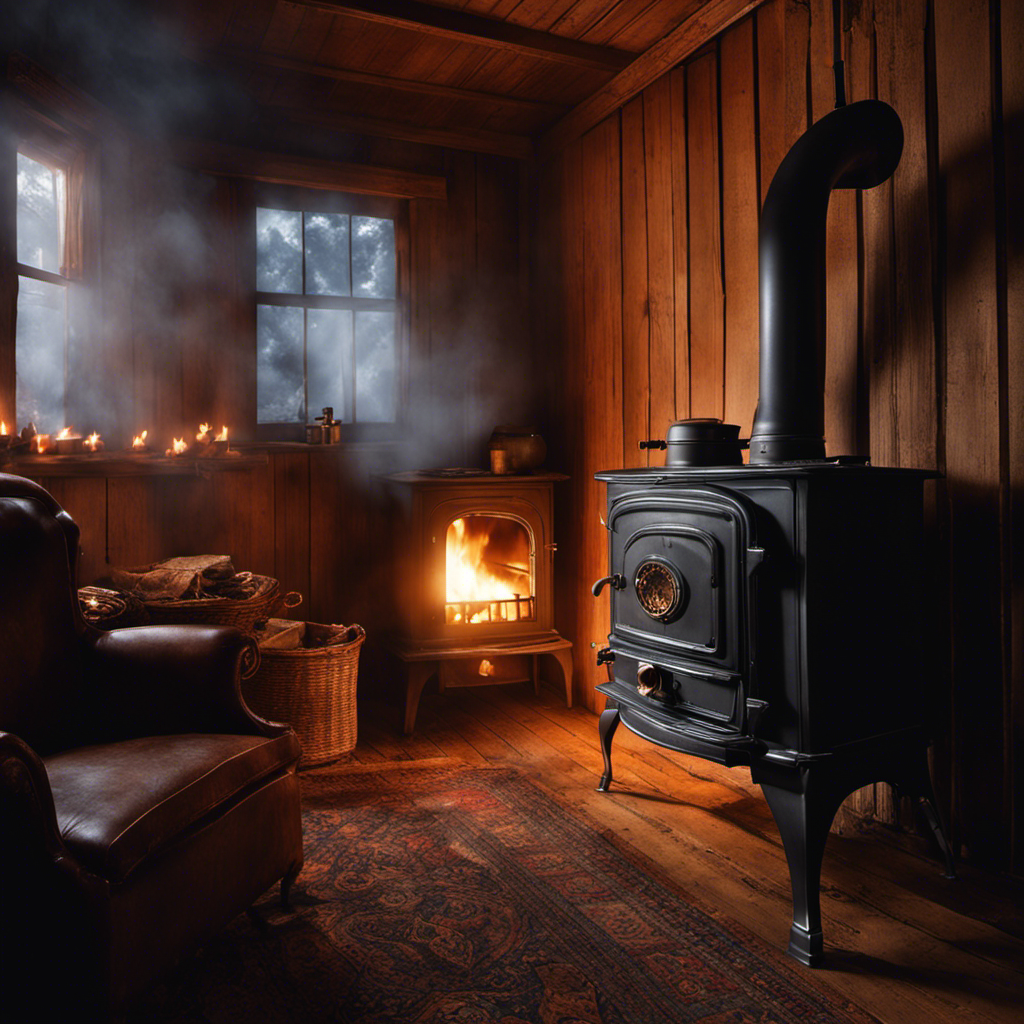
Much like a candle flickering out in the absence of oxygen, my wood stove has a tendency to extinguish itself whenever I shut its door. This situation is quite annoying, however, worry not, as I have unraveled the mystery behind this baffling occurrence.
From insufficient airflow to damaged door seals, incorrect fuel choices to improper loading techniques, and even clogged chimneys or flues, I’ll explore all the possible culprits.
Join me on this journey as we shed light on why your wood stove’s fire is extinguished when you shut the door.
Key Takeaways
- Insufficient airflow caused by a closed door restricts the oxygen supply and leads to incomplete burning of wood, resulting in less heat output and more smoke production.
- A damaged door seal disrupts the balance of combustion air, causing the fire to go out when the door is closed. Inspecting and replacing the seal is essential for ensuring a tight seal and improving airflow.
- Using the incorrect fuel type can lead to poor combustion and potential issues with the fire going out when the door is closed. It is crucial to use the appropriate fuel for optimal performance and safety, considering alternative options if necessary.
- Improper loading technique, such as using wet or unseasoned firewood, overloading the stove, or arranging the wood improperly, can restrict airflow and lead to inefficient burning and potential smoke backdraft. Following maintenance tips for safe and efficient operation is important.
Insufficient Airflow
I can’t figure out why there’s insufficient airflow in my wood stove when I close the door. It’s frustrating because it affects the efficiency of the stove and makes it difficult to maintain a consistent fire.
After some research and personal experience, I’ve come to realize that ventilation issues are often the culprit. When the door is closed, the stove becomes a closed system, restricting the flow of air and reducing the oxygen supply needed for combustion.
This can lead to incomplete burning of the wood, resulting in less heat output and more smoke production. Not only does this impact the performance of the stove, but it also has environmental implications. Incomplete burning releases more pollutants into the air, contributing to air pollution and potentially harming the environment.
To address this issue, it’s important to ensure proper ventilation in the stove, allowing for a steady supply of air and better combustion.
Damaged Door Seal
Inspecting the damaged door seal and replacing it with a new one can help improve the airflow in the wood stove. A damaged door seal is a common issue that can lead to inadequate combustion and a lack of proper airflow. When the seal is damaged, it allows air to leak into the stove, which disrupts the balance of combustion air and can cause the fire to go out when the door is closed.
To address this problem, it’s important to properly inspect the door seal for any signs of damage, such as cracks or gaps. Replacing the seal with a new one will ensure a tight seal and improve the overall performance of the wood stove.
- Inspect the door seal for any signs of damage
- Replace the damaged seal with a new one
- Ensure a tight seal to improve airflow
Incorrect Fuel Type
Using the incorrect fuel type in a wood stove can lead to poor combustion and potential issues with the fire going out when the door is closed. It’s crucial to use the appropriate fuel for optimal performance and safety.
When it comes to alternative fuel options, there are a few things to consider. Pellets, for instance, are a popular choice as they burn efficiently and produce less smoke. Other options include corn, wood chips, and even sawdust. However, it’s essential to consult your stove’s manufacturer or a professional to ensure compatibility with your specific model.
Additionally, regular maintenance is key to keeping your wood stove working effectively. This includes cleaning the chimney, inspecting the door seals, and checking for any signs of wear or damage. By following these maintenance tips and using the correct fuel, you can avoid potential issues and ensure a consistent and efficient fire.
Now, let’s discuss the importance of proper loading technique.
Improper Loading Technique
When loading my wood stove, it’s crucial to avoid improper techniques to ensure safe and efficient operation. Proper maintenance and understanding troubleshooting tips are essential for optimal performance. Here are some key points to keep in mind:
-
Use dry, seasoned firewood: Wet or green wood can lead to poor combustion and a buildup of creosote, which can increase the risk of chimney fires.
-
Arrange the wood properly: Place smaller pieces of wood on the bottom and larger ones on top to facilitate good airflow and even burning.
-
Avoid overloading the stove: Overfilling can restrict airflow and cause the fire to smolder, leading to inefficient burning and potential smoke backdraft.
Clogged Chimney or Flue
I need to address the issue of a clogged chimney or flue before it becomes a major problem. A clogged chimney or flue can have serious consequences for the proper functioning of a wood stove or fireplace.
One common cause of a clogged chimney is an obstructed air intake. This can occur when debris or objects block the entrance of the chimney, preventing the efficient flow of air.
Another potential issue is a blockage in the exhaust pipe. This can happen due to the buildup of creosote, a flammable substance that forms when wood is burned. If the exhaust pipe becomes blocked, it can lead to poor ventilation and even the risk of a chimney fire.
Therefore, it’s essential to regularly inspect and clean the chimney and flue to ensure proper airflow and prevent any blockages.
Frequently Asked Questions
Can a Wood Stove Go Out if There Is Not Enough Airflow?
A wood stove can go out if there isn’t enough airflow. Insufficient ventilation restricts oxygen supply, causing the fire to die down. Damaged airflow or improper ventilation can lead to this issue.
How Can a Damaged Door Seal Affect the Performance of a Wood Stove?
A damaged door seal can significantly impact the performance of a wood stove. It can result in decreased airflow, causing the stove to go out when the door is closed. This issue needs prompt attention to ensure optimal functionality.
What Happens if I Use the Wrong Type of Fuel in My Wood Stove?
Using the wrong type of fuel in a wood stove can have detrimental effects on its performance. It can lead to poor combustion, excessive smoke, and potential damage to the stove. Proper ventilation and moisture control are crucial for optimal wood stove usage.
Does the Way I Load the Wood Into My Stove Affect Its Ability to Stay Lit?
When it comes to keeping a wood stove lit, the way you load the wood can make a big difference. Properly stacking the wood and ensuring it is dry will help maintain a steady burn and prevent the stove from going out.
Can a Clogged Chimney or Flue Cause a Wood Stove to Go Out?
A clogged flue or chimney can restrict airflow and cause a wood stove to go out. It’s important to maintain proper ventilation to ensure a steady burn and prevent the stove from extinguishing.
Conclusion
In conclusion, when a wood stove goes out after closing the door, it’s often due to:
- Insufficient airflow
- A damaged door seal
- Using the wrong type of fuel
- Improper loading technique
- A clogged chimney or flue
Understanding these possible causes and addressing them accordingly will help ensure that your wood stove operates efficiently and effectively.
Don’t let a simple issue like a dying fire dampen the warmth and comfort of your home. Take the necessary steps to keep your wood stove burning brightly.
Logan’s affair with adventure began in childhood. He hailed from a small town where vast forests bordered one side and endless shores stretched on the other. His days were spent exploring uncharted woods, climbing tall trees, or listening to the tales of old sailors. This early immersion in a world brimming with stories and mysteries became the foundation of his passion for writing.
Wood Stove
How To Clean Country Hearth Wood Stove Glass Door
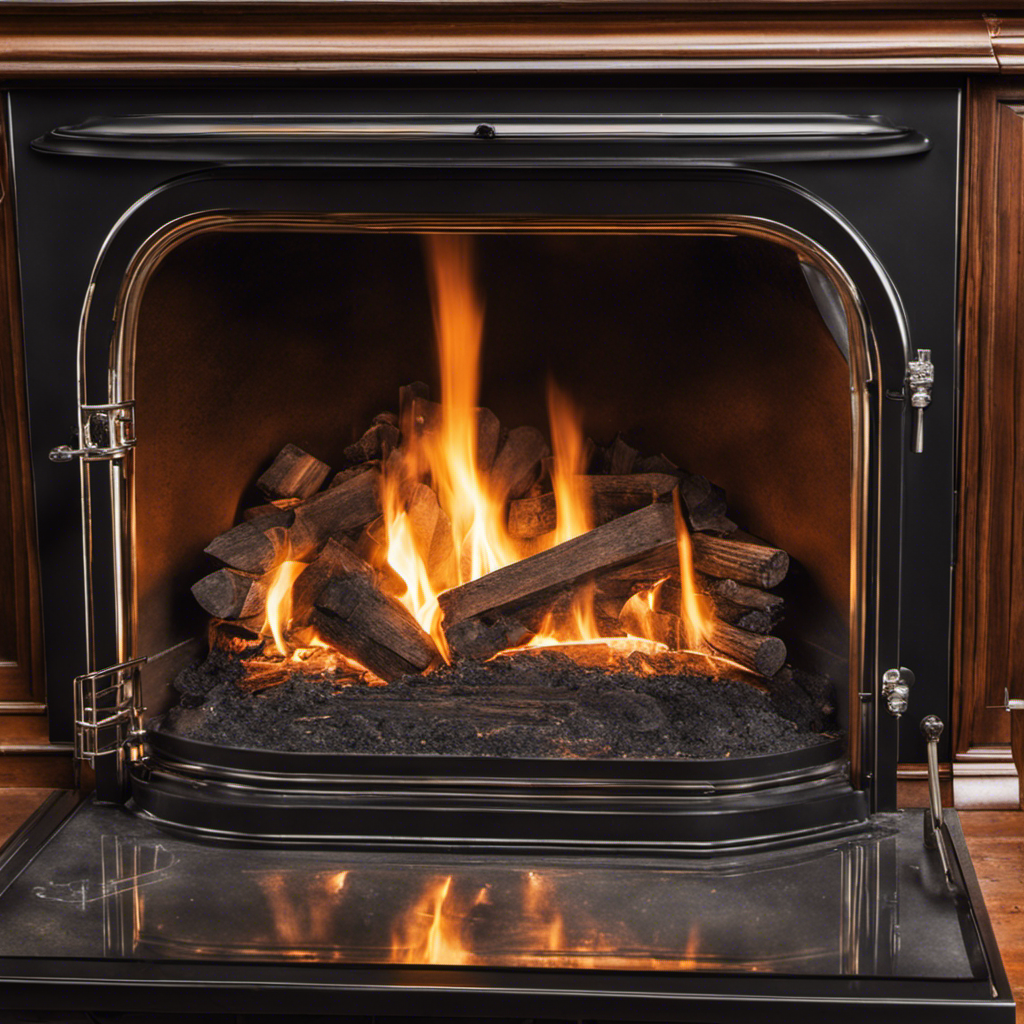
Were you aware that the glass door of a wood stove, when covered with dirt in a countryside house, might decrease its efficiency by as much as 20%? This highlights the significance of ensuring its cleanliness.
In this article, I’ll show you step-by-step how to effectively clean your wood stove’s glass door. With a simple cleaning solution and a little elbow grease, you’ll have a clear and sparkling door in no time.
Let’s get started!
Key Takeaways
- Mix one part vinegar with three parts water to create a cleaning solution.
- Regularly wipe down the glass door with a dry cloth to maintain cleanliness.
- Inspect the seal for wear or damage and replace it if needed.
- Use a glass door cleaner specifically designed for tough stains and residue.
Preparing the Cleaning Solution
I will mix one part vinegar with three parts water to create the cleaning solution. This solution is effective in removing stubborn residue and dirt from the glass door of a country hearth wood stove.
To begin, it’s important to choose the right cleaning tools. A soft cloth or sponge is ideal for gently scrubbing the glass without scratching it. Avoid using abrasive materials that can damage the surface.
Additionally, it’s helpful to prevent future build-up on the glass door. One tip is to regularly wipe down the door with a dry cloth to remove any excess ash or debris. Another tip is to avoid burning wet or damp wood, as this can cause more residue to accumulate.
By following these cleaning and maintenance practices, the glass door will stay clear and beautiful.
Now, let’s move on to the next step of removing the glass door from the wood stove.
Removing the Glass Door From the Wood Stove
Once the screws are loosened, carefully lift the glass door away from the wood stove using oven mitts or heat-resistant gloves. It’s important to handle the glass door with caution to avoid any accidents or injuries.
Removing the glass door is necessary for various maintenance tasks, such as replacing the glass door seal or troubleshooting common glass door issues.
Inspect the seal for any signs of wear or damage, and if needed, replace it with a new one. Troubleshooting common issues may involve checking for loose screws, adjusting the door hinges, or cleaning the door tracks.
Once the glass door is safely removed, it’s time to move on to the next step: cleaning the glass door with the solution.
Cleaning the Glass Door With the Solution
To clean the glass door, I gently scrubbed it with the solution, using a soft cloth to remove any dirt or smudges.
When it comes to cleaning techniques for a wood stove glass door, it’s important to use the right tools and solutions to ensure a thorough cleaning without damaging the glass. Homemade cleaning solutions can be a great option as they’re cost-effective and environmentally friendly.
One popular homemade solution is a mixture of vinegar and water. This solution effectively cuts through grease and grime, leaving the glass door sparkling clean. Simply mix equal parts vinegar and water in a spray bottle, spray it onto the glass door, and wipe it off with a soft cloth. This gentle cleaning technique is perfect for regular maintenance.
Transitioning into the next section about scrubbing away stubborn stains and residue, it’s important to note that sometimes, even homemade solutions may not be enough to completely remove tough stains and residue.
Scrubbing Away Stubborn Stains and Residue
The glass door cleaner effectively removes stubborn stains and residue, leaving the surface looking brand new.
When it comes to cleaning wood stove glass doors, it’s essential to choose the right cleaner to avoid scratching or damaging the glass. The glass door cleaner is specifically designed to tackle tough stains and residue without causing any harm.
To use it, simply spray the cleaner onto the glass surface and let it sit for a few minutes. Then, using a soft cloth or sponge, gently scrub away the stains and residue. Rinse the glass thoroughly with clean water and dry it with a lint-free cloth.
By regularly cleaning your wood stove glass door with the glass door cleaner, you can prevent future stains and residue buildup.
However, if you prefer alternative cleaning methods, you can also use a mixture of vinegar and water or baking soda paste to clean the glass. Remember to always follow the manufacturer’s recommendations and be cautious when cleaning the glass door to ensure its longevity and maintain its pristine appearance.
Reinstalling the Glass Door and Final Steps
I carefully align the glass door with the hinges and secure it in place using the provided screws. Once the door is secured, the next step in the process of cleaning and maintaining a Country Hearth Wood Stove is reinstalling the door handle.
This is an important step as it ensures the door can be properly opened and closed. To reinstall the door handle, I locate the screw holes on the door and align the handle accordingly. I then insert the screws and tighten them using a screwdriver.
With the door handle securely in place, I move on to the final step – polishing the glass surface. Using a glass cleaner and a soft cloth, I gently polish the glass to remove any streaks or smudges, leaving it clean and clear.
This not only improves the aesthetic appeal of the stove but also allows for better visibility of the fire inside.
Frequently Asked Questions
Can I Use Any Type of Cleaning Solution to Clean the Country Hearth Wood Stove Glass Door?
Yes, you can use different types of cleaning solutions to clean the country hearth wood stove glass door. However, it is important to choose a solution that is specifically designed for wood stoves. Here are some tips for maintaining a clean glass door on a wood stove.
How Often Should I Clean the Glass Door of My Wood Stove?
I clean the glass door of my wood stove every two weeks to keep it looking clear and prevent buildup. To properly clean it, I use a mixture of vinegar and water and a soft cloth.
Can I Clean the Glass Door While It Is Still Attached to the Wood Stove?
Yes, it is possible to clean the glass door while it’s still attached to the wood stove. To do so, I recommend using a non-abrasive cleaner and a soft cloth to gently remove any dirt and soot.
Is It Necessary to Remove the Glass Door in Order to Clean It?
No, it is not necessary to remove the glass door in order to clean it. There are alternative cleaning methods that can be used while the door is still attached to the wood stove.
Can I Use a Regular Household Sponge or Cloth to Scrub Away Stubborn Stains and Residue?
Yes, you can use a regular household sponge or cloth to scrub away stubborn stains and residue on the country hearth wood stove glass door. However, using alternative cleaning tools like vinegar and baking soda can be more effective.
Conclusion
In conclusion, cleaning the glass door of your Country Hearth wood stove is a simple yet crucial task to maintain its beauty and functionality.
By following the steps outlined in this article, you can easily remove stubborn stains and residue, leaving your glass door looking clear and pristine.
So, don’t let dirt and grime dim the warmth and charm of your wood stove; take the time to clean its glass door and let its radiant glow shine through.
Logan’s affair with adventure began in childhood. He hailed from a small town where vast forests bordered one side and endless shores stretched on the other. His days were spent exploring uncharted woods, climbing tall trees, or listening to the tales of old sailors. This early immersion in a world brimming with stories and mysteries became the foundation of his passion for writing.
-

 Wood Stove4 weeks ago
Wood Stove4 weeks agoWhen To Open And Close Damper On Wood Stove
-

 Wood Stove3 weeks ago
Wood Stove3 weeks agoHow To Build A Thermoelectric Generator For A Wood Stove
-
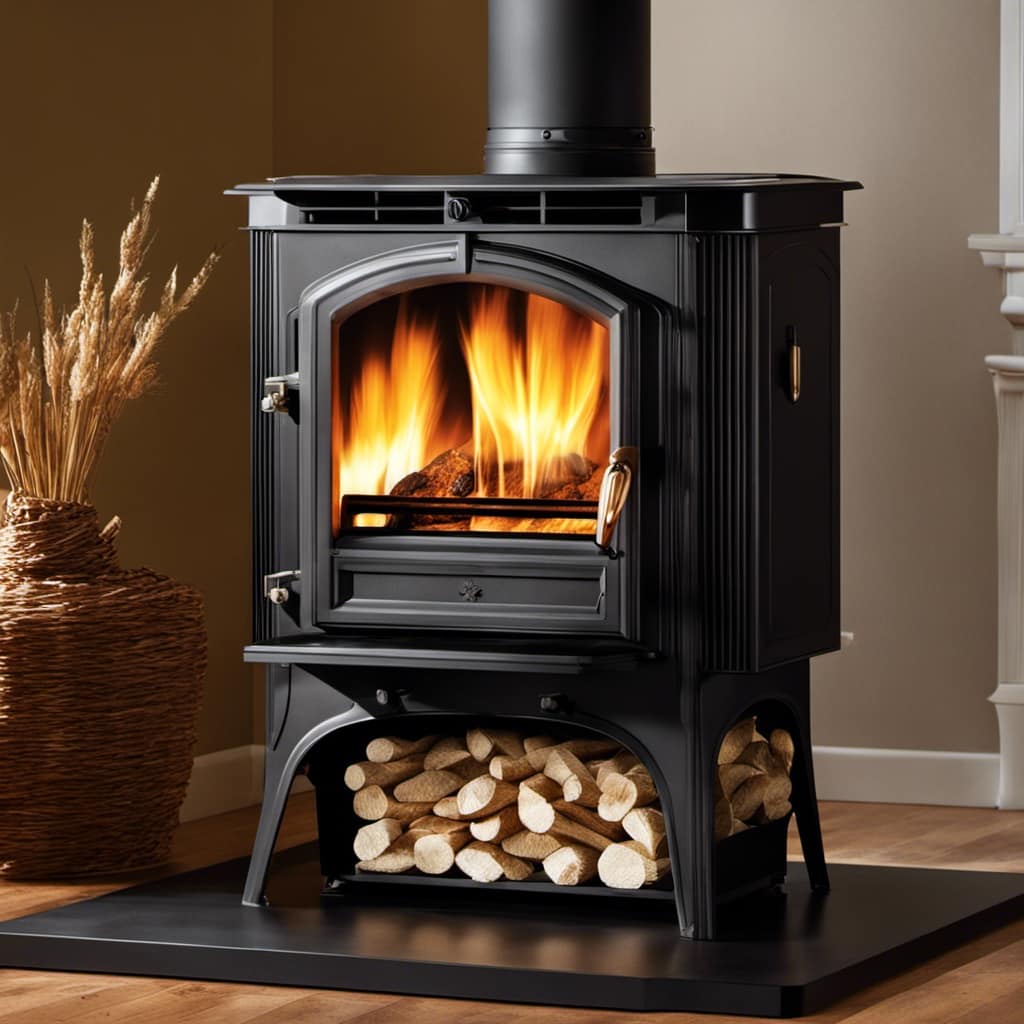
 Wood Stove4 weeks ago
Wood Stove4 weeks agoHow To Use Damper And Draft On Wood Stove
-

 Wood Stove3 weeks ago
Wood Stove3 weeks agoHow Does A Circulator Wood Stove Work
-
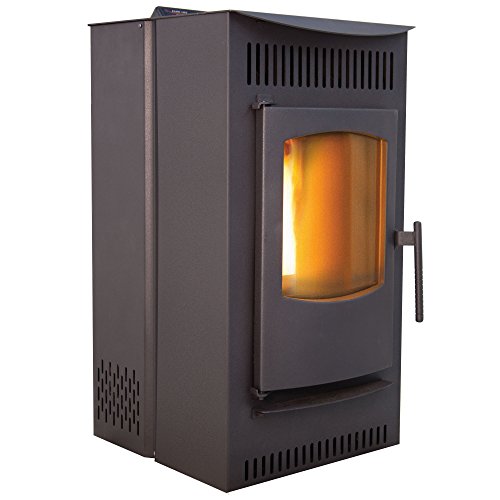
 Pellet Stoves2 days ago
Pellet Stoves2 days agoWhy Is My Wood Pellet Stove Putting so Much Soot
-

 Wood Stove3 weeks ago
Wood Stove3 weeks agoHow Far Does Wood Stove Have To Be From Wall
-
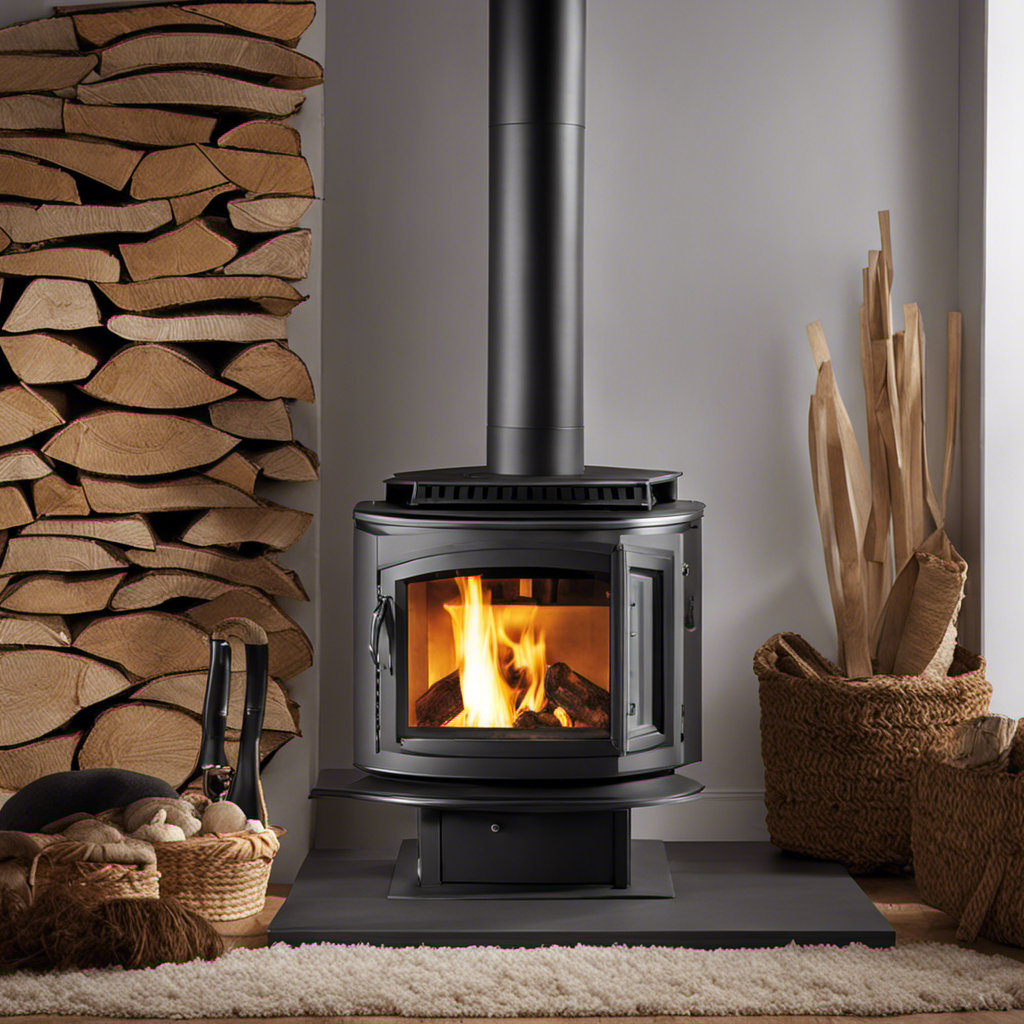
 Wood Stove4 weeks ago
Wood Stove4 weeks agoWhat Can I Use As Insulation On Wood Stove Pipes
-
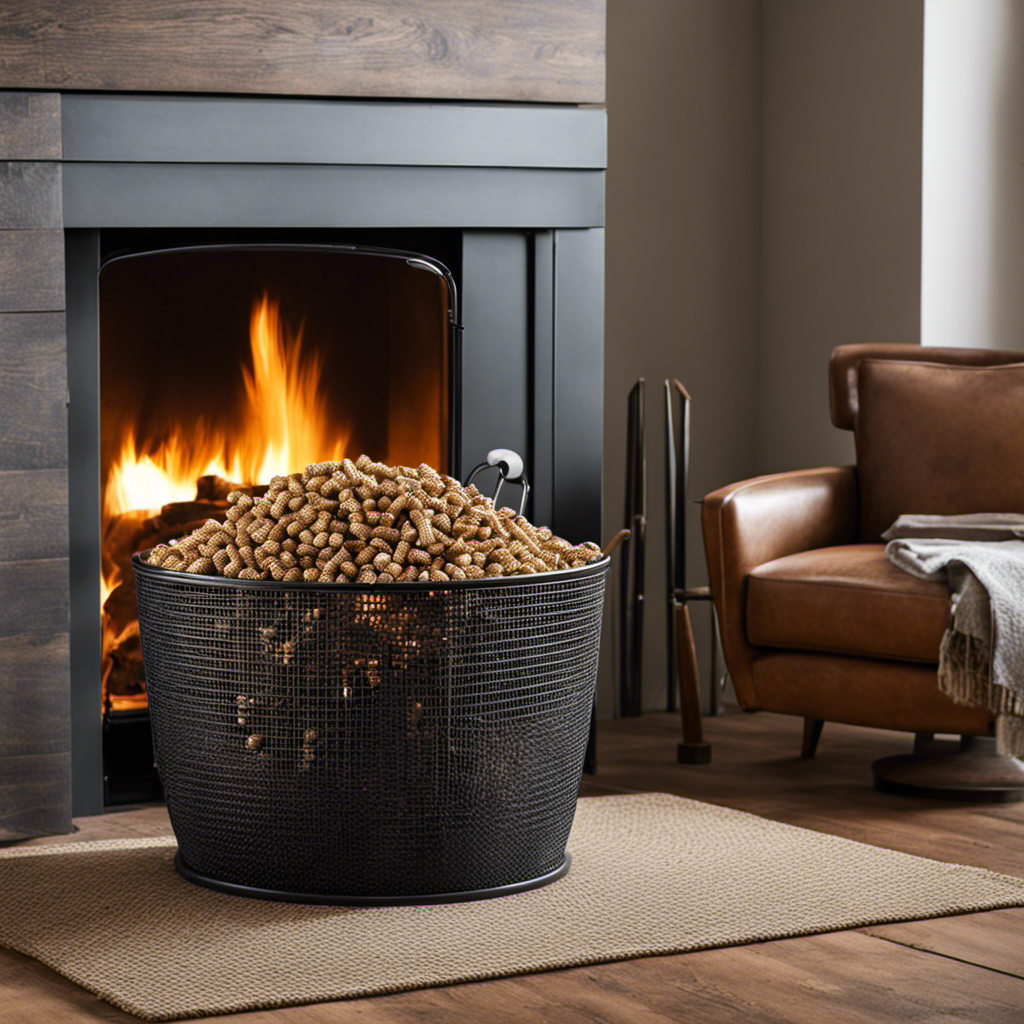
 Pellet Stoves4 days ago
Pellet Stoves4 days agoHow to Make a Pellet Basket for Wood Burning Stoves







